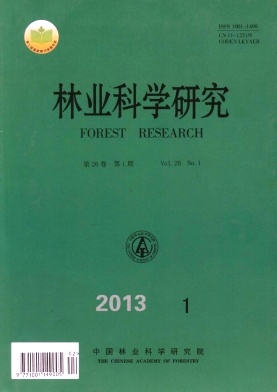|
[1]
|
张慧智,史学正,于东升,等.中国土壤温度的空间预测研究[J]. 土壤学报, 2009, 46(1):1-8
|
|
[2]
|
Meikle R W, Treadway T R. A mathematical method for estimating soil temperatures in Canada[J]. Soil Science, 1981, 131(5):320-326 |
|
[3]
|
史学正, 邓西海. 我国土壤温度状况[M].北京:科学出版社, 1993:353-360
|
|
[4]
|
关德新, 吴家兵, 金昌杰, 等. 用气象站资料推算附近森林浅层地温和气温[J]. 林业科学, 2006, 42(11):132-137
|
|
[5]
|
冯学民, 蔡德利. 土壤温度与气温及纬度和海拔关系的研究[J]. 土壤学报, 2004, 41(3):489-491
|
|
[6]
|
Tabari H, Sabziparvar A-A, Ahmadi M. Comparison of artificial neural network and multivariate linear regression methods for estimation of daily soil temperature in an arid region[J]. Meteorology and Atmospheric Physics, 2011, 110(3-4):135-142 |
|
[7]
|
姚付启, 张振华, 钱为君. 烟台果园土壤温度影响因素及其预测模型研究[J]. 农业系统科学与综合研究, 2008, 24(2):201-204
|
|
[8]
|
邹 平, 杨劲松, 姚荣江. 土壤温度时间序列预测的BP神经网络模型研究[J]. 中国生态农业学报,2008, 16(4):835-838
|
|
[9]
|
王选耀. 烟台地区土壤温度变化特征及预测模型研究[J]. 农业系统科学与综合研究,2010, 26(4):487-492
|
|
[10]
|
Bilgili M. Prediction of soil temperature using regression and artificial neural network models[J]. Meteorology and Atmospheric Physics, 2010, 110(1-2):59-70 |
|
[11]
|
Ozturk M, Salman O, Koc M. Artificial neural network model for estimating the soil temperature[J]. Canadian Journal of Soil Science, 2011, 91(4):551-562 |
|
[12]
|
Mihalakakou G. On estimating soil surface temperature profiles [J]. Energy and Buil, 2002, 34(3):251-259 |
|
[13]
|
Grant R F, Izaurralde R C, Chanasyk D S. Soil temperature under different surface managements:testing a simulation model[J]. Agricultural and Forest Meteorology, 1995, 73(1-2):89-113 |
|
[14]
|
Paul K I, Polglase P J, Smethurst P J. Soil temperature under forests:a simple model for predicting soil temperature under a range of forest types[J]. Agricultural and Forest Meteorology, 2004, 121(3-4):167-182 |
|
[15]
|
Veltena K, Pascholdb P-J, Stahelc A. Optimization of cultivation measures affecting soil temperature [J]. Scientia horticulturae, 2003, 97(2):163-184 |
|
[16]
|
Gao Z, Bian L, Hu Y, et al. Determination of soil temperature in an arid region[J]. Journal of Arid Environments, 2007, 71(2):157-168 |
|
[17]
|
Gao Z, Horton R, Wang L, et al. An improved force-restore method for soil temperature prediction[J]. European Journal of Soil Science, 2008, 59(5):972-981 |
|
[18]
|
Zheng D, Hunt Jr E R, Running S W. A daily soil temperature model based on air temperature and precipitation for continental applications[J]. Climate Research, 1993, 2:183-191 |
|
[19]
|
Elias E A, Cichota R, Torriani H H, et al. Analytical soil–temperature model correction for temporal variation of daily amplitude[J]. Soil Science Society of America journal, 2004, 68(3):784-788 |
|
[20]
|
Conway K E, Pickett L S. Solar Heating (Solarization) of Soil in Garden Plots for Control of Soilborne Plant Diseases[J]. Oklahoma Cooperative Extension Service, 1999, EPP-7640:1-2 |
|
[21]
|
Harris R N. Variations in air and ground temperature and the POM-SAT model:results from the Northern Hemisphere [J]. Climate of the Past, 2007, 3(4):611-621 |
|
[22]
|
Dardo G O, Pousa J L, Pilan L. Predicting temperature and heat flow in a sandy soil by electrical modeling [J]. Soil Science Society of America journal, 2001, 65(4):1074-1080 |
|
[23]
|
Droulia F, Lykoudis S, Tsiros I, et al. Ground temperature estimations using simplified analytical and semi-empirical approaches [J]. Solar Energy, 2009, 83(2):211-219 |





 DownLoad:
DownLoad: